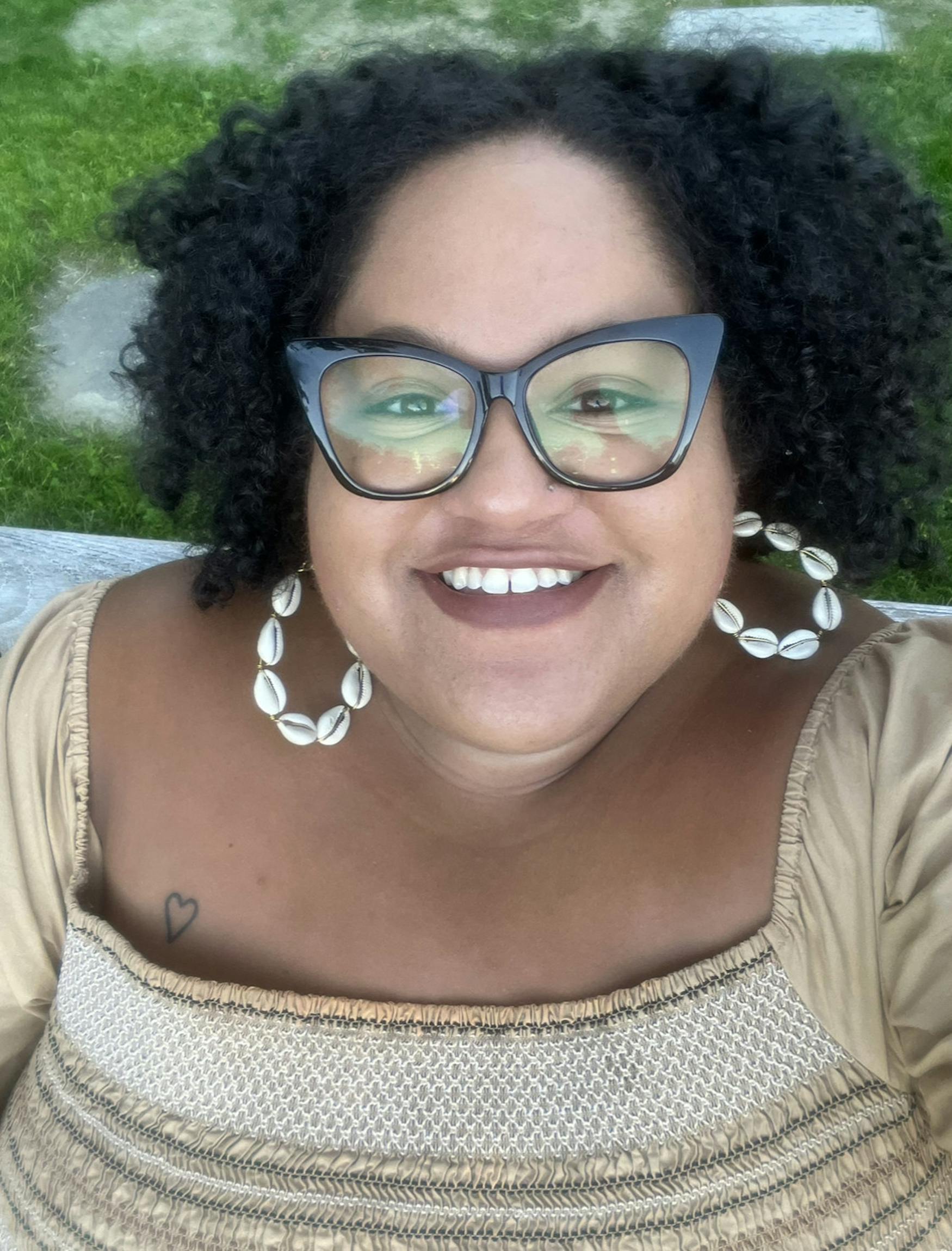One student’s legacy: Alumna Alexandra Thomas returns to teach at alma mater
Adjunct lecturer Alexandra Thomas (AAAS) reflects on her time at Brandeis and her return to campus for the fall 2023 semester.
Alumna Alexandra Thomas ʼ18 is an adjunct professor in the African and African American Studies department for the fall 2023 semester. A scholar of cross-disciplinary expertise in African diasporic art, photography and new media, Black feminist thought, and queer theory, Thomas was invited by the AAAS department to teach the course “History of African American Art.”
While a Brandeis undergraduate, Thomas double majored in AAAS and Women’s, Gender, and Sexuality Studies and minored in Art History and English. Following graduation, she went on to study at Yale University, where she is now finishing a joint Ph.D. in African American Studies and History of Art, with a certificate in Women’s Gender, and Sexuality Studies. Her dissertation “Afrekete’s Touch: Black Queer Feminist Errantry and Global African Art” examines how Black artists adopt aesthetics that are considered wayward, errant, non-normative, and fugitive in resistance to the pressures on them as Black artists.
“My work is first and foremost Black feminist work,” Thomas noted while explaining the origin of her passion for art historical studies in a Oct. 20 conversation with the Justice. As a student at Brandeis, she saw herself as an emerging Black feminist scholar who was able to engage with a variety of disciplines from art history to English literature. Then, as she embarked on her post-grad career, she decided to lean further into art history, having had an affinity for visual culture, as well as many fond experiences interning at the Rose Art Museum — for example, meeting Black abstract artist Jennie C. Jones and other inspirations. To this day, Thomas continues to look to Black women’s literature in studying visual works as she does in her dissertation which references Afrekete, a Pan-African water goddess and an icon in Black lesbian literature.
Alongside her research, Thomas has journeyed into curatorial work. Her exhibition, “Homecoming: Domesticity and Kinship in Global African Art,” is now open at the Hood Museum of Art at Dartmouth College through May 2024 and explores ideas of home in Black art from the 19th century to the present day. In the past, Thomas has worked with numerous other museums and cultural institutions, including the Rose Art Museum, where she worked as an undergraduate gallery assistant and later interned.
When asked about Brandeis faculty that have influenced her, Thomas credited her senior thesis advisor, Prof. Faith Smith (AAAS/ENG), as having given her a foundational knowledge in African and African American literature and culture. She remarks that Smith’s intensive literary training has provided her with skills that still aid her today in her doctorate program: “There are things she taught me in 2015 that are now still very present in my dissertation in 2023.”
In her History of African American Art course, Thomas teaches artists like Ana Mendieta, Jack Whitten, Mark Bradford, Howardena Pindell, and Ellen Gallagher, whose works she both studied and viewed on display during her time as a Rose intern. She aims to give her students that same experiential introduction to art history by studying both the literature of the field and the physical artwork available at the Rose. “It really feels like a full circle moment to be at Brandeis now teaching about these artists,” she said.
The course is designed to equip students with the vocabulary that is necessary to be immersed into the Black art world. Rather than structuring the course chronologically, all major themes in African American art history are embedded throughout the material. “Throughout the class, we talk about slavery and imperialism and queerness and feminism. That was important to me because it reflects what's happening in the Black art world,” Thomas said. “These conversations are prescient.”
Thomas also said she felt that the Rose has always been ahead of its time, especially as a university museum. She said that the museum has long held a commitment to showing Black artists’ pieces and the nuances of Black abstraction. And, when asked about any observed changes in the Rose Art Museum since she was a student, Thomas noted a greater dedication to contemporary Indigenous artists such as Rose B. Simpson, Jeffrey Gibson, and alumnus James “Ari” Montford ’74 — which Thomas feels is a critical point of change considering the campus is situated on the unceded land of the Massachusett, Nipmuc, and Pawtucket peoples.
As a member of the class of 2018, Thomas recalls the importance of being involved in Ford Hall 2015: “during this keen sense of uprising and resilience and in some cases, rebellion to the norms of the University.” Ford Hall 2015 encompassed a 13-day sit-in at the Bernstein-Marcus building, conducted by Black and other POC students who called for direct action towards racial justice on campus, after which students and the administration came to an agreement that resulted in the recruitment of more underrepresented faculty and students of color, hiring a vice president for Diversity, Equity and Inclusion among other actions.
As a Brandeisian returning to campus on different terms, Thomas is able to see what has changed since the Ford Hall 2015 protests: from the role of the chief diversity officer being fulfilled by Dr. LeManuel Lee Bitsóí of the Navajo people to seeing that the other hired faculty this year consists of many Black, Latina, and Asian women professors. But she also noted similarities: one example being a radical political spirit in Brandeis students that reminded her of her own cohort. “Getting to see current students who have that oppositional consciousness and willingness to critique the world around them and try to build a new world that can be a better place for all of us is really inspiring for me.”



Please note All comments are eligible for publication in The Justice.